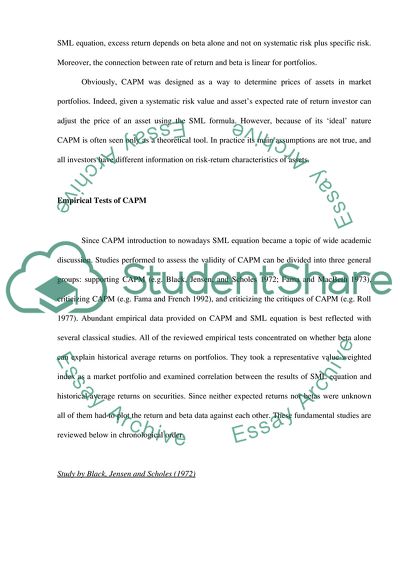Cite this document
(“What do empirical tests of the Capitsl Asset Pricing Model (CAPM) tell Essay”, n.d.)
What do empirical tests of the Capitsl Asset Pricing Model (CAPM) tell Essay. Retrieved from https://studentshare.org/miscellaneous/1540740-what-do-empirical-tests-of-the-capitsl-asset-pricing-model-capm-tell-us-about-the-validity-of-this-model
What do empirical tests of the Capitsl Asset Pricing Model (CAPM) tell Essay. Retrieved from https://studentshare.org/miscellaneous/1540740-what-do-empirical-tests-of-the-capitsl-asset-pricing-model-capm-tell-us-about-the-validity-of-this-model
(What Do Empirical Tests of the Capitsl Asset Pricing Model (CAPM) Tell Essay)
What Do Empirical Tests of the Capitsl Asset Pricing Model (CAPM) Tell Essay. https://studentshare.org/miscellaneous/1540740-what-do-empirical-tests-of-the-capitsl-asset-pricing-model-capm-tell-us-about-the-validity-of-this-model.
What Do Empirical Tests of the Capitsl Asset Pricing Model (CAPM) Tell Essay. https://studentshare.org/miscellaneous/1540740-what-do-empirical-tests-of-the-capitsl-asset-pricing-model-capm-tell-us-about-the-validity-of-this-model.
“What Do Empirical Tests of the Capitsl Asset Pricing Model (CAPM) Tell Essay”, n.d. https://studentshare.org/miscellaneous/1540740-what-do-empirical-tests-of-the-capitsl-asset-pricing-model-capm-tell-us-about-the-validity-of-this-model.


